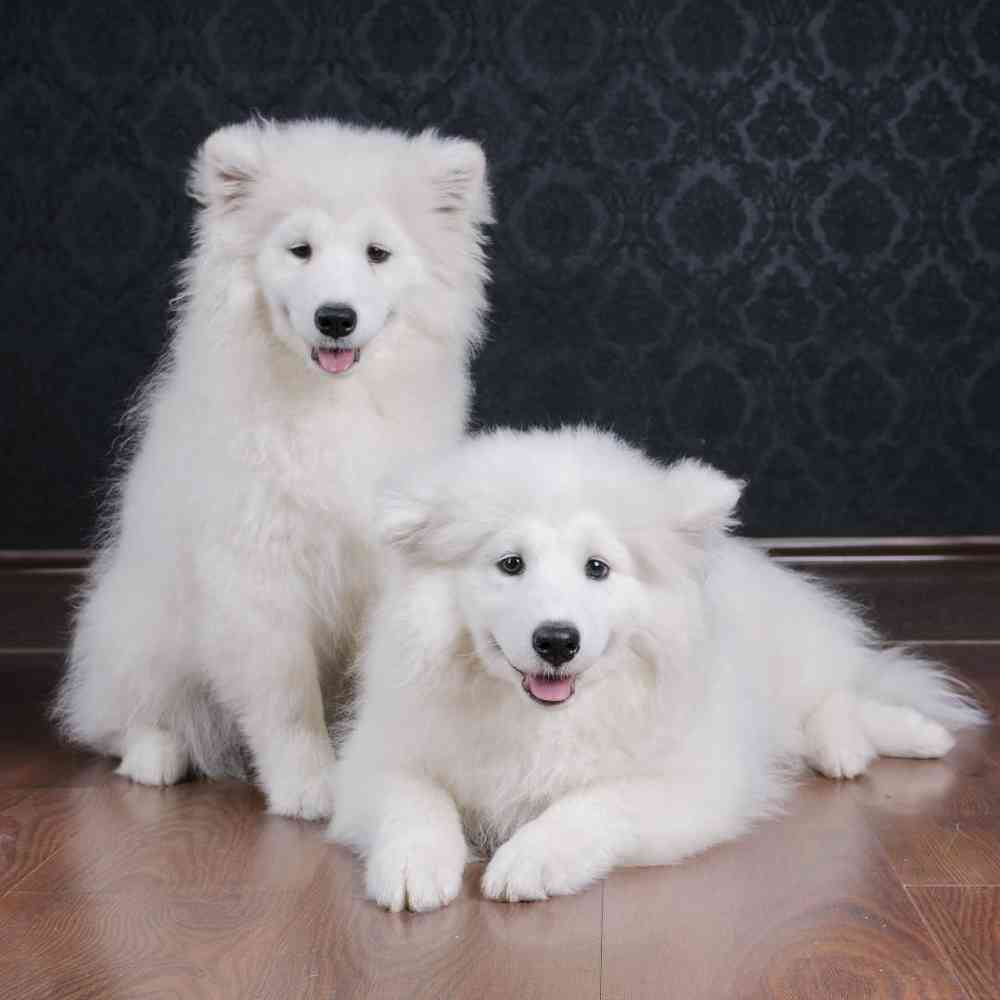Samoyed

The Samoyed is a substantial but graceful dog standing anywhere from 19 to a bit over 23 inches at the shoulder. Powerful, tireless, with a thick all-white coat impervious to cold—Sammies are perfectly beautiful but highly functional. Even their most delightful feature, a perpetual smile, has a practical function: The upturned corners of the mouth keep Sammies from drooling, preventing icicles from forming on the face. A Sammy sentenced to solitary confinement in the yard is a miserable—and destructive—creature. These are smart, social, mischievous dogs who demand love and attention. Sammies need a very firm but loving hand in training. As pack animals, they must learn early who the alpha dog is—and the alpha dog must be you.

Want to know more about Samoyed ?
Breed Traits
About
Samoyeds, the smiling sledge dogs, were bred for hard work in the world’s coldest locales. In the Siberian town of Oymyakon, for instance, temperatures of minus-60 degrees are common. The Sammy’s famous white coat is thick enough to protect against such brutal conditions. Powerful, agile, tireless, impervious to cold—Sammies are drop-dead gorgeous but highly functional. Even their most delightful feature, a perpetual smile, has a practical function: The mouth’s upturned corners keep Sammies from drooling, preventing icicles from forming on the face.
History
Standard
Nutrition
Grooming
Exercise
Training
Health
Group
Working
Description
Health Awareness
Personality
Exercise/Energy Level
General Appearance
General Appearance - The Samoyed, being essentially a working dog, should present a picture of beauty, alertness and strength, with agility, dignity and grace. As his work lies in cold climates, his coat should be heavy and weather-resistant, well groomed, and of good quality rather then quantity. The male carries more of a "ruff" than the female. He should not be long in the back as a weak back would make him practically useless for his legitimate work, but at the same time, a close-coupled body would also place him at a great disadvantage as a draft dog. Breeders should aim for the happy medium, a body not long but muscular, allowing liberty, with a deep chest and well-sprung ribs, strong neck, straight front and especially strong loins. Males should be masculine in appearance and deportment without unwarranted aggressiveness; bitches feminine without weakness of structure or apparent softness of temperament. Bitches may be slightly longer in back than males. They should both give the appearance of being capable of great endurance but be free from coarseness. Because of the depth of chest required, the legs should be moderately long. A very short-legged dog is to be deprecated. Hindquarters should be particularly well developed, stifles well bent and any suggestion of unsound stifles or cowhocks severely penalized. General appearance should include movement and general conformation, indicating balance and good substance. (b) Substance - Substance is that sufficiency of bone and muscle which rounds out a balance with the frame. The bone is heavier than would be expected in a dog of this size but not so massive as to prevent the speed and agility most desirable in a Samoyed. In all builds, bone should be in proportion to body size. The Samoyed should never be so heavy as to appear clumsy nor so light as to appear racy. The weight should be in proportion to the height.
Size, Proportion, Substance
Head
Neck, Topline, Body
Forequarters
Coat
Color
Gait
Temperament
Disqualifications
All pets have found there homes! Sign up to be notified when new pets are added so you don't miss out.




